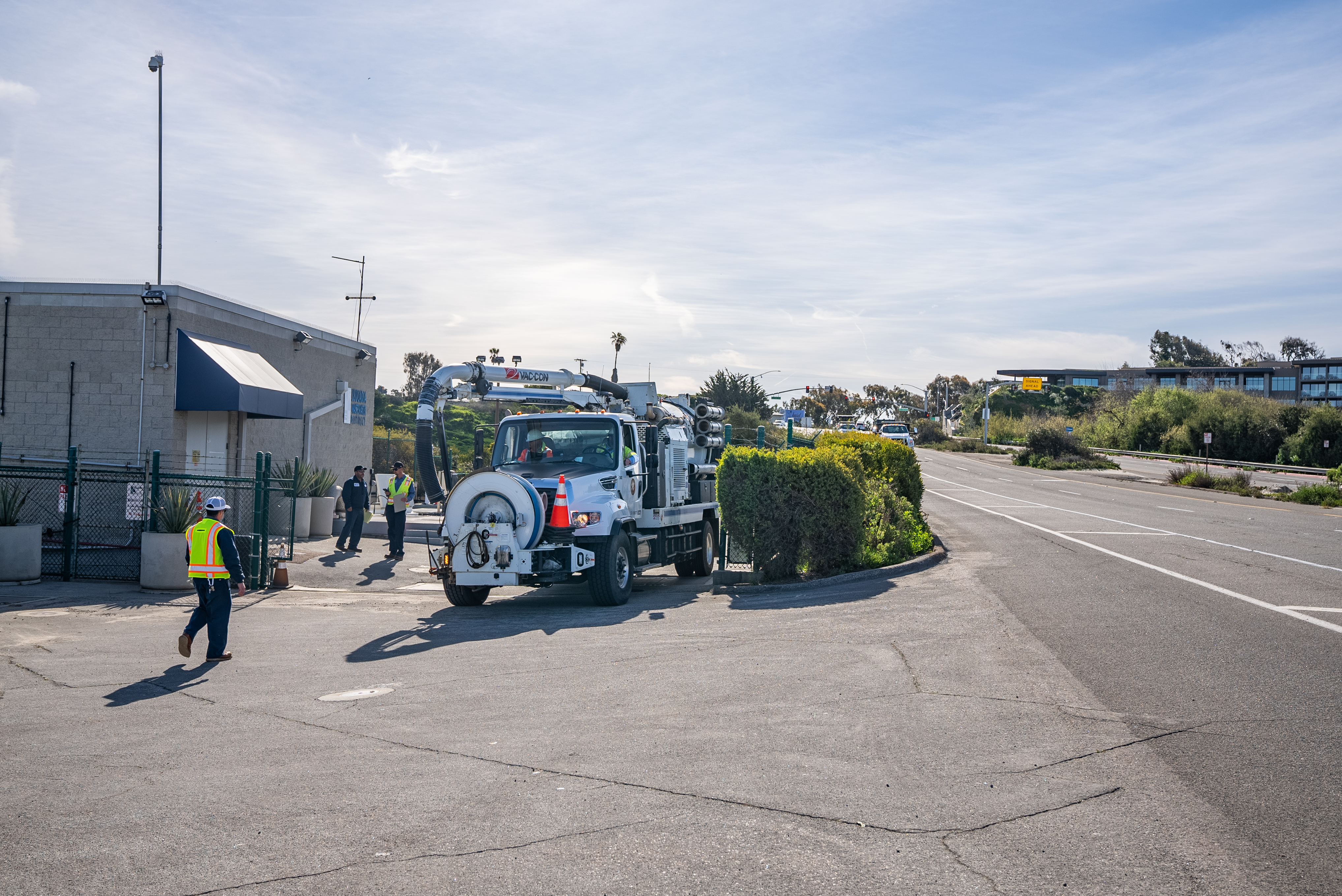
Sewer Pipelines
To maintain the pipelines, our Field Services staff follows our preventive maintenance plan and operates a closed circuit televised truck (CCTV), along with a hydro-cleaning truck to keep the wastewater flowing to prevent sewage spills. The hydro-cleaning truck is a large multi-functioning/combination truck that includes a hose with various nozzles that sprays high pressured water to clean roots, debris, or grease from the pipelines. The loose debris is then vacuumed up into a debris tank on the combination truck and properly disposed of.
After the pipeline has been cleaned by the hydro-cleaning truck, the field services staff lowers a closed circuit camera into an open manhole that connects to the sewer pipeline. A field staff member operates the camera from inside the CCTV truck to view the condition of the pipe. Based upon the staff’s evaluation of the pipeline, the pipeline may need additional cleaning or repair. In some cases the pipe may need to be relined or replaced. In this case, a pipelining or repair project will be added to our Asset Management Plan.
You can find additional information about our Asset Management Plan. This process may seem simple, but our field staff works hard to clean and locate any damaged or clogged pipelines, so repairs can be made before the problem causes a sewer spill.
Pump Stations
In addition to maintaining the pipelines, the District also has 10 pump stations to operate and maintain. The pump stations are required due to the hilly geography of the service area. The wastewater needs to be pumped up the hills into the gravity pipelines. These pump stations range in size from lift stations serving residential communities to a larger regional size pump station that convey wastewater to the Encina Water Pollution Control Facility for treatment.
Due to the complexity of the pump stations and their electronic components, they require frequent inspections and maintenance. Our field services staff follows maintenance standards that include detailed daily and weekly inspections of the equipment that runs the pumps inside each station. Maintaining these pump stations is vital to keeping the wastewater flowing into the gravity pipelines. For example, if there is a power outage, it could potentially cause a sewer spill. As a backup plan, the District has six power generators that are permanently mounted at the pump stations just in case of power outage. These generators have automatic transfer switches that will automatically turn on if there was a power outage. In addition, the District has two portable trailer-mounted generators that can be taken to a pump station if required. All eight generators must also be inspected and tested on a monthly basis. In addition to maintaining the generators, the District must maintain records of inspections to be in compliance with the Air Pollution Control District.
